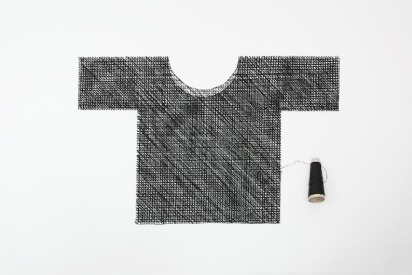
There’s no shortage of designers inspired by nature (take a peek at these Ted talks for a few goodies). And I totally get it. There’s just something beautiful about organic processes – the growth and decay and change that surrounds our daily lives. The scent of hot, wet pavement after a summer storm. The first hint of a spring breeze as the winter thaws the ground below. And, for Jungeun Lee of Studio Koya’s latest collection titled Nuue, the silkworm’s diligence in creating a unique, one-of-a-kind masterpiece.
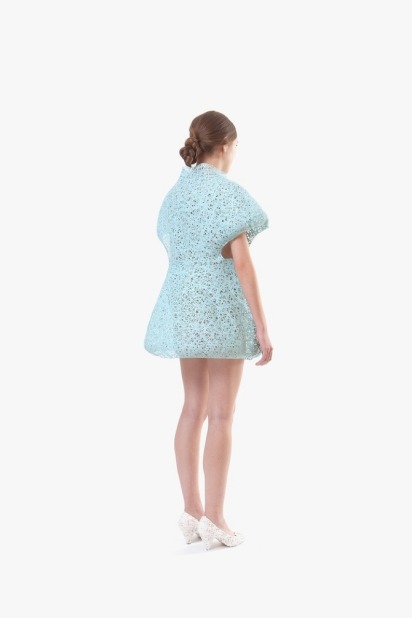
Nuue is the Korean word for Cocoon, a fitting description for artist Jungeun Lee’s first foray into fashion. “I have been aiming to find a way of creating garments [ever since] I was a student,” she writes. “[But] I didn’t have any experience to make clothes.” Jungeun, a trained artist, wasn’t skilled or experienced in traditional methods of fashion design, creating patterns and working with seamstresses to build a garment from needle and thread. Yet, a dream is a dream. Instead of giving up, she simply invented a new method for fashion design using the skills she already possessed: plastic molding.
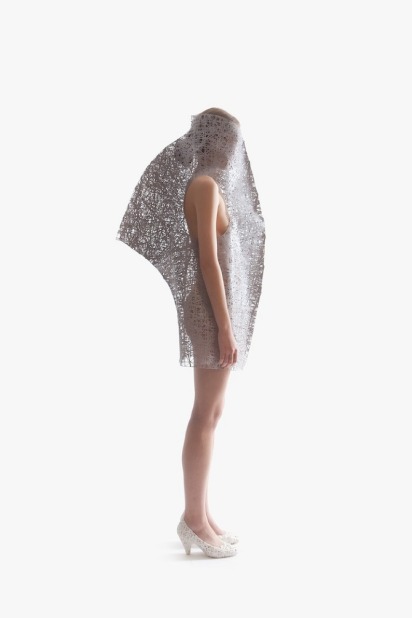
“I was inspired by the plastic molding process, in which liquid plastic can be injected into a mold and then freely transformed into 3-dimensional shapes,” she writes. Jungeun’s process looks similar, merging the technological advancements of plastic molding with the most ancient molding technique to date: a silkworm’s cocoon.
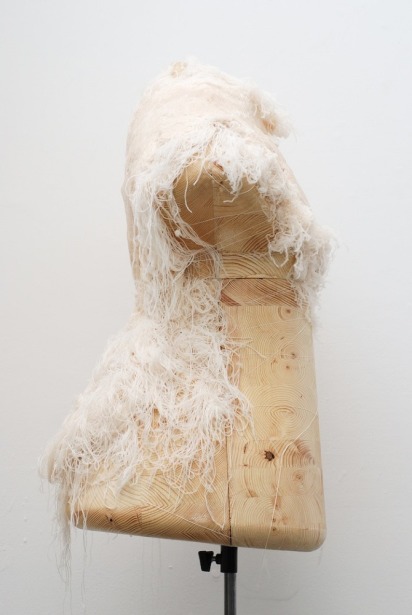
“First, I make a mold,” she explains. “It can be a wooden mannequin or a board. And I wrap synthetic fiber around a created form by hand as evenly as possible. When heat and pressure are applied, the wound fiber transforms itself into a 3-dimensional garment bringing some expected and unexpected sculptural silhouettes.” And suddenly, the butterfly is born.
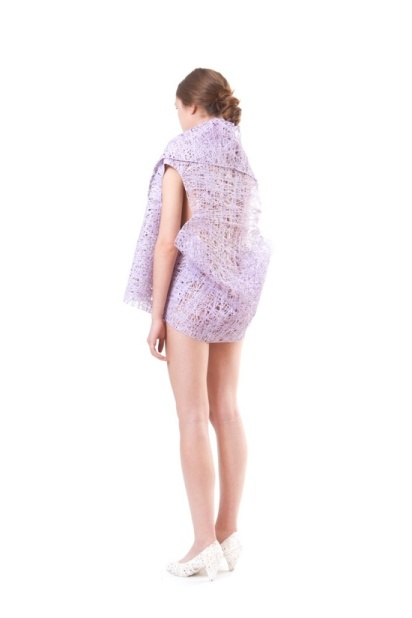
The process is incredibly time-consuming, so Jungeun’s next goal is to develop a machine to streamline the wrapping process and produce a less conceptual, more practical collection. “But I want to keep this slow hand-working part as well, because I appreciate the quality and beauty of time and care it takes,” she writes.
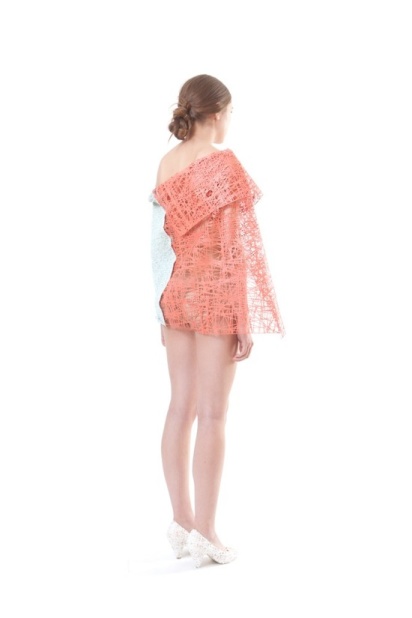
Worth noting, of course, is that Jungeun’s process is zero waste. “As long as we cut patterns out of fabric, that has to produce some amount of material waste,” Jungeun explains. “But the technique to produce Nuue can replace those conventional methods, building a garment that results in less material waste because the fiber directly creates the shape of the garment itself.”
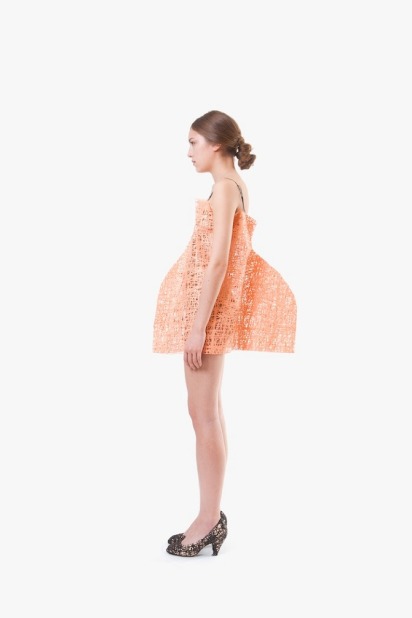
And perhaps the texture of the garment is the biggest surprise of all. “They look stiff and hard, but they are actually quite soft like a fabric,” Jungeun writes. “Just like a silkworm spinning a cocoon while tracing its own shape with layers of silk, it naturally forms a little bigger and softer shape around its body. It is like a natural molding process to create the most efficient surface to cover its content.”

Jungeun says her process can easily be adapted to create products, as well. “But for me, the most important thing is to create things that make me happy,” she writes. “I enjoy inventing my own personal methods of making things. It is always challenging, but this is what I love.”
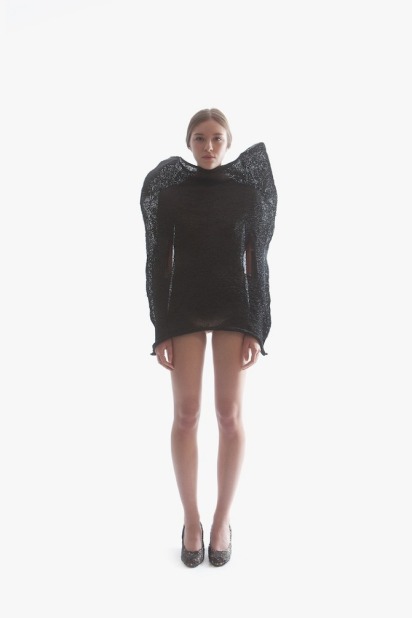
Richard Bach once said, “What the caterpillar calls the end of the world the master calls a butterfly.” And I’m endlessly inspired by Jungeun, the caterpillar who spun with the threads of inexperience and discomfort. She could have easily pinned her dream of designing a fashion collection to a board, displayed behind a glass frame of doubt and fear and regret. But instead, she weaved a more transformative story – one of growth and change and innovation. One of a butterfly.
Image Credits: Jungeun Lee
p.s. The opposite of Jungeun’s project: the molded vessel.


what an amazing process!! so inspiring :)
I couldn’t agree more. :)
So beautifuuuuullll…thanks for sharing.
You’re welcome, Puti. :)
thanks for sharing, it was inspiring and helped me in my own fashion project. Nature is wonderful indeed!
Love it!! it’s too cool!!!